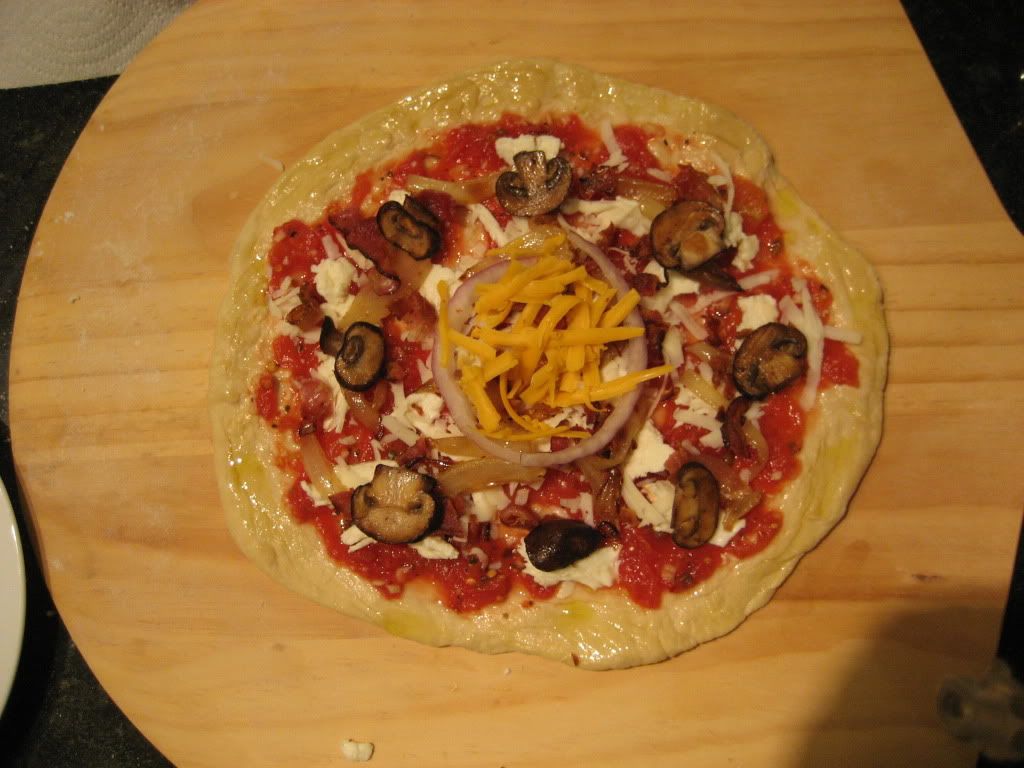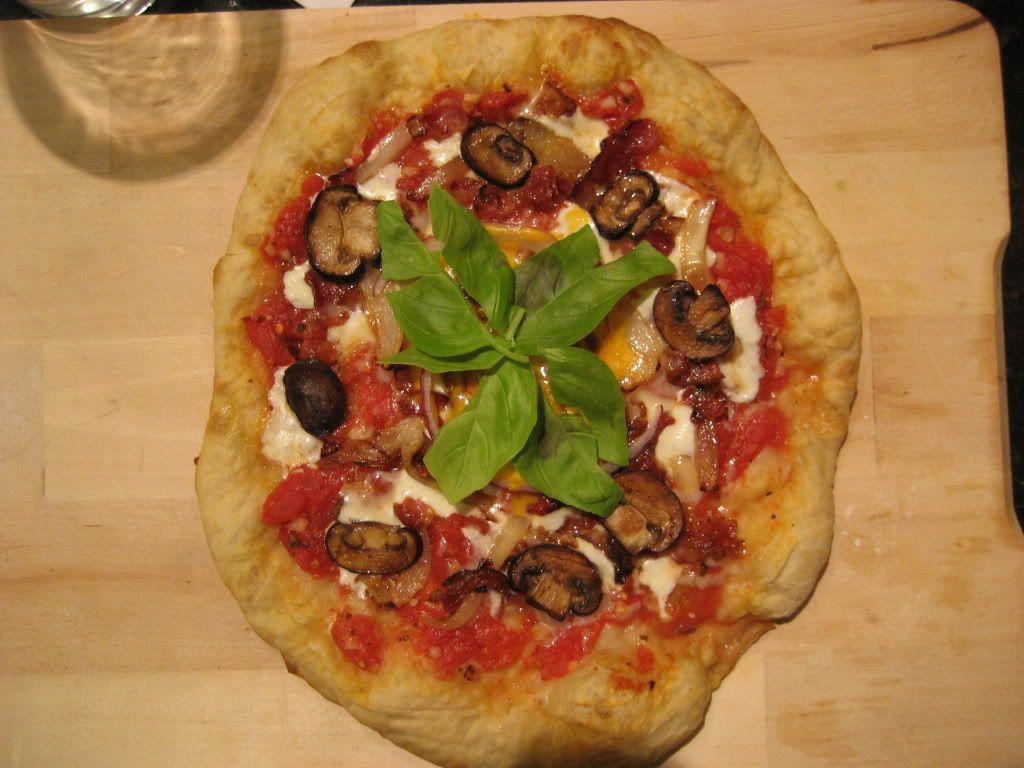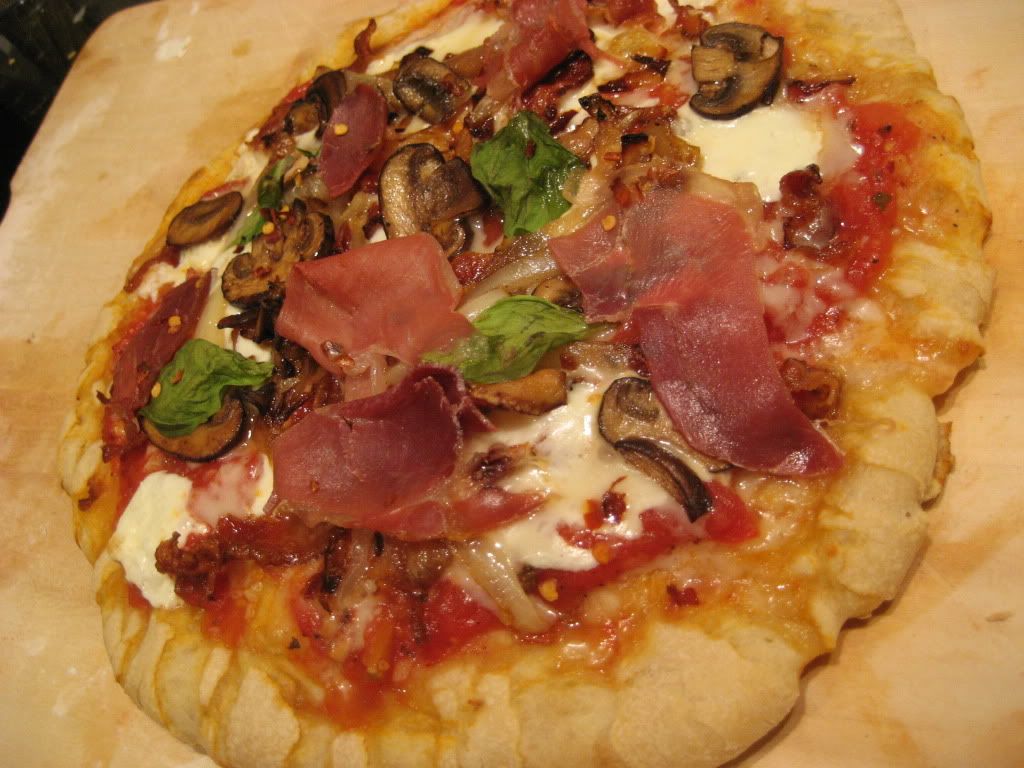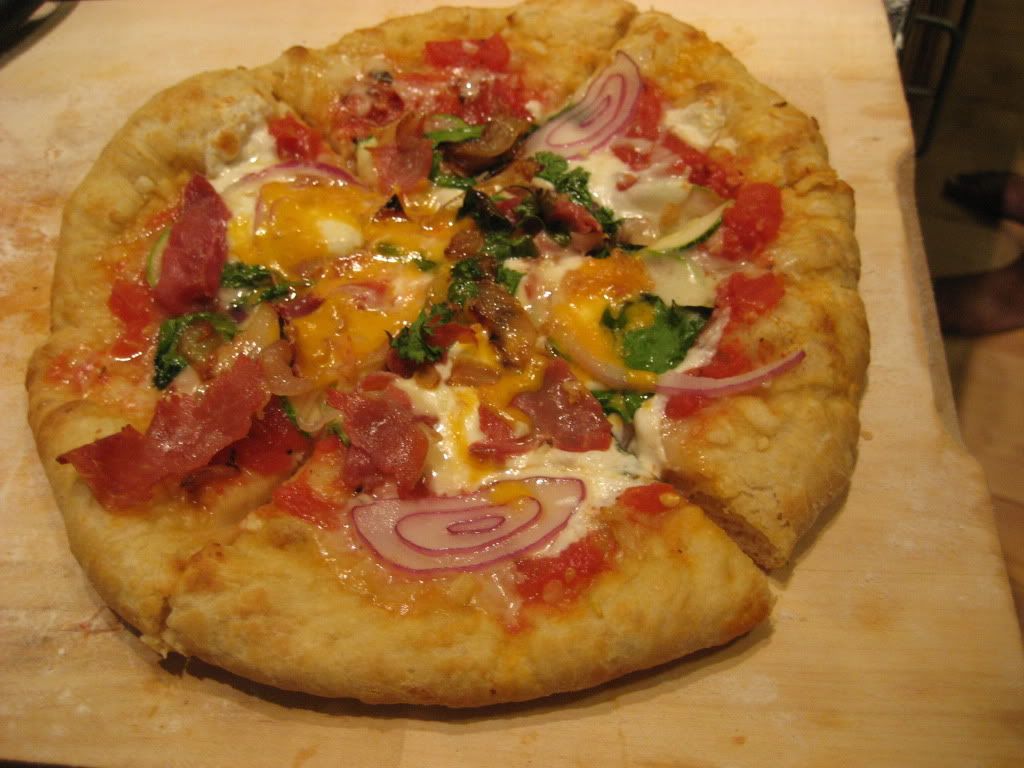I didn’t used to think that lasagna was anything special. It’s good, sure, but the usual mess of packaged mozzarella/ricotta, meat sauce and pre-made pasta sheets is more satisfying to the appetite than the palate.
Then I had lasagne in
Bologna. Lasagne alla Bolognese is a simple dish. Its heart and soul are a rich Bolognese and freshly rolled sheets of lasagne verdi, made with spinach. These ingredients are brought together and transformed by the addition of béchamel and Parmigiano Reggiano. Nothing else is necessary. Without hunks and dollops of fresh cheese to weigh and water it down, this highest form of lasagne is rendered into a crispy, tender, multi-layer delight that remains buoyant despite its density.
I’ve never since had lasagne to match or even rival the two I sampled during the few days I spent in
Bologna. Although American restaurants occasionally get the concept, they usually put in too much stuff and somehow it isn’t quite right. Bolognese cuisine is not particularly delicate, and really there is no good reason why a proper Lasagne alla Bolognese is hard to find. But it is. The following effort was an attempt to do lasagne right, to capture the essence of a dish that is known to too many people only in a diluted, inadequate form.
As a guide, I used Marcella Hazan’s
Classic Italian Cookbook. She largely shares my opinion of lasagne, and respectfully dismisses the Southern Italian immigrant version, laden with meatballs, sausage and heaps of cheese. She only mentions the bastardized mainstream version indirectly, when she insists that one can never make lasagne with anything but homemade pasta.
For her recipe, you need only a few ingredients. The most important is a quantity of Bolognese sauce. You need to have this ready to go unless you want to make your lasagne an all-day project. I recommend making huge quantities of Bolognese at one time. It lasts for over a week in the fridge, and for months in the freezer, with essentially no ill-effect. I used the same sauce that I posted a couple weeks ago, which had been frozen. You also need flour, eggs and spinach for pasta, butter and milk for the béchamel and Parmigiano Reggiano.
The first step is to cook your spinach; I used about a half-pound of fresh leaves. You can use frozen too. Clean and remove any stems, then cook it in a pan with just the water that clings to the leaves. After 10-15 minutes it should be at a point where a little prodding will turn it basically to mush. Take it out to drain and cool. Squeeze out as much water as possible, then chop it very finely.
Now, place the spinach and two eggs into a well of flour without fucking up by making the well too small like I did. It’s alright if you do though, just scoop the egg back in like I did.
I think I started with 2.5 cups of flour, but I can’t quite remember. Anyway, I added more later. You want to mix the spinach into the eggs pretty thoroughly with a fork or your fingers. Then incorporate the flour gradually. It will go from a sticky mess to a putty-like ball. Add as much flour as you can without making the dough dry and crumbly. I think the spinach actually makes the pasta more pliable and generally easier to deal with. After it’s all mixed, knead for 8-10 minutes. It looks like this.
Meanwhile, you can heat some milk for the béchamel gently. I used 2.5 cups. Marcella doesn’t infuse it with anything, but I threw in a couple crushed garlic cloves. I think it’s also traditional to grate some nutmeg in there, which I neglected to do, but would recommend.
When you’re done working the pasta, melt five tablespoons of butter in a sauce pan for the roux. When it’s melted, add about 2.5 tablespoons of flour. Cook the flour over fairly low heat for a couple minutes, stirring constantly. Add the hot milk slowly, just a tablespoon or so at a time for the first few, then a little more, mixing it into the roux all the while. When all the milk is added, the béchamel should be a viscous liquid, similar to heavy cream. Season it.
It might be better to do the béchamel after the pasta is fully prepped, but I did it earlier, leaving it on the lowest heat possible until I was ready for it.
Now, roll out the pasta with a rolling pin or pasta machine. It should be about as thick as a flat noodle like fettuccine. Mine was a bit thicker, which I think is fine. This picture shows the pasta a little more than halfway through the rolling process.
Depending on the size of your casserole dish, cut the pasta into strategic strips. They don’t have to be the size of the entire dish; you can just use multiples for each layer. Keep scraps for filling holes.
Preheat the oven to 450.
Put the pasta in boiling water. Remove it about ten seconds after the water comes back to a boil, then rinse in cold water and lay out to dry. Beautiful.
When everything is ready, spread a thin layer of Bolognese at the bottom of your pan or casserole, using the fattier part at the top. Then build layers of pasta separated with Bolognese, béchamel and parmesan. Here's my first of five layers.
I only had parmesan on the bottom and top layer, plus to top off the whole thing, but that was accidental. Marcella says to taste the béchamel/Bolognese mixture and add varying amounts of cheese depending on how much flavor it has, with more cheese going into less flavorful layers. Just do what you want, basically, but make sure to top it with béchamel, cheese and some butter to get a good crust. There’s not really as much butter as there appears in these pictures; the pieces are really thin.
The lasagne should be in the oven about 10-15 minutes. I turned on the broiler for the last couple minutes to get some extra crispness on top. It is a rather striking finished product.
Enjoy with fresh pepper and some more grated cheese, to taste.
Bonus shot:
I made this macaroni last night with provolone and cheddar left over from last week's pizza. It's a poor cousin to the kingly lasagne, but still very tasty. To cook it, just make the same bechamel described above, adding onions sauteed with garlic, thyme and red pepper, grated provolone and cheddar. Stir in your macaroni product of choice or convenience, already cooked, then put in a casserole and top with more provolone/cheddar, bread crumbs and pecorino romano, or another grating cheese.

















































